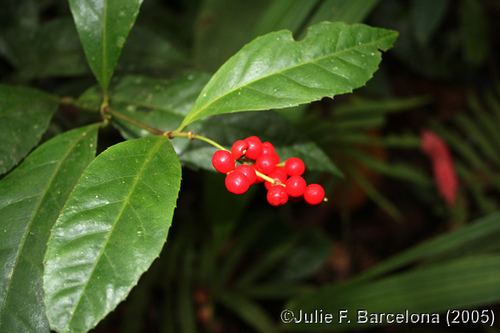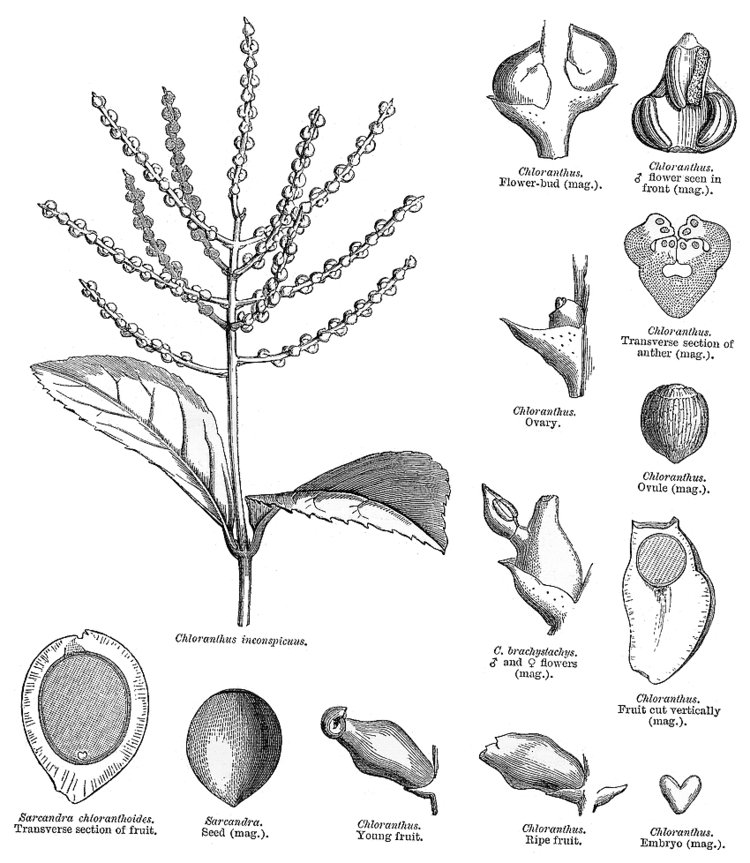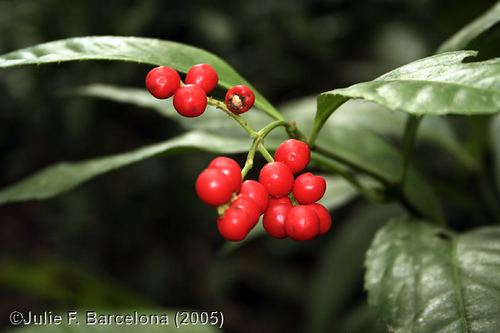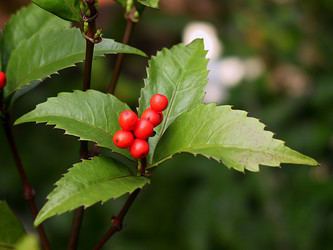Kingdom Plantae Order ChloranthalesR.Br. | Clade Angiosperms Scientific name Chloranthaceae Rank Family | |
 | ||
Lower classifications | ||
chloranthus chloranthaceae
Chloranthaceae /ˌklɔərænˈθeɪʃiː/ is a family of flowering plants (angiosperms), the only family in the order Chloranthales. It is not closely related to any other family of flowering plants, and is among the early-diverging lineages in the angiosperms. They are woody or weakly woody plants occurring in Southeast Asia, the Pacific, Madagascar, Central and South America, and the West Indies. The family consists of four extant genera, totalling about 77 known species according to Christenhusz and Byng in 2016. Some species are used in traditional medicine. The type genus is Chloranthus.
Contents

chloranthus chloranthaceae
Description

Chloranthaceae species are aromatic plants with soft wood, having opposite, evergreen leaves with distinctive serrate margins and interpetiolar stipules (similar to the stipules found in family Rubiaceae). The flowers are inconspicuous, and arranged in inflorescences. Petals are absent in this family, and sometimes so are sepals. The flowers can be either hermaphrodite or of separate sexes. The fruit is drupe-like, consisting of one carpel.
Taxonomy

Chloranthaceae have been recognised as a family in most classifications but without clear relatives. Molecular systematic studies have shown that it is not closely related to any other family and is among the early-diverging lineages in the angiosperms. In particular, it is neither a eudicot nor a monocot. Fossils assigned to Chloranthaceae, or closely related to the family, are among the oldest angiosperms known. The APG II system (2003) left the family unplaced as to order, but the APG III system (2009) accepted Chloranthales, containing only this family. The cladogram below, from the APG IV system (2016), shows the Chloranthales in a trichotomy with the magnoliids and the monocot-Ceratophyllales-dicot clade. Earlier the order was grouped with magnoliids, but studies in 2014 did not support this placement, so that its phylogeny remains unclear.
Genera
As of June 2016, four extant genera are recognized:
The extinct genus Chloranthistemon also belongs to this family.
Historical classifications
The Cronquist system (1981) assigned the family
to the order PiperalesThe Thorne system (1992) placed it
in the order Magnoliales, which was assignedThe Dahlgren system raised the family to be
its own order Chloranthales, which was assigned
